What Is Fabric Width: Simple Guide To Understanding Sizes
Have you ever looked at a beautiful piece of textile and wondered what ‘fabric width’ means? It’s a simple term for how wide a piece of material is. Knowing the fabric width is very useful for any sewing or craft project. Understanding these basics is great, especially if you plan to add special touches like custom labels to your creations later.
1. What exactly is fabric width?
So, what is fabric width? Imagine a roll of fabric. The fabric width is the measurement from one side edge to the other side edge. It’s how wide the material roll width is before it’s cut to the length you want.
The side edges of the fabric are special, which are called selvages. They often look or feel a bit different from the main fabric.
When you buy fabric, the stated fabric width usually includes these selvages. However, for your projects, you mostly use the part between the selvages. This is called the “usable width”. The selvages are typically not part of the pieces you cut for sewing.
Think of it like the crust on a loaf of bread – it’s the edge, and you might trim it off. Understanding the usable width vs. total width including selvage is important.
It’s also good to know that fabric width is different from fabric length. The cloth width is usually set when the fabric is made by the manufacturer. The length is how much fabric you decide to buy, like 1 yard or 2 meters.
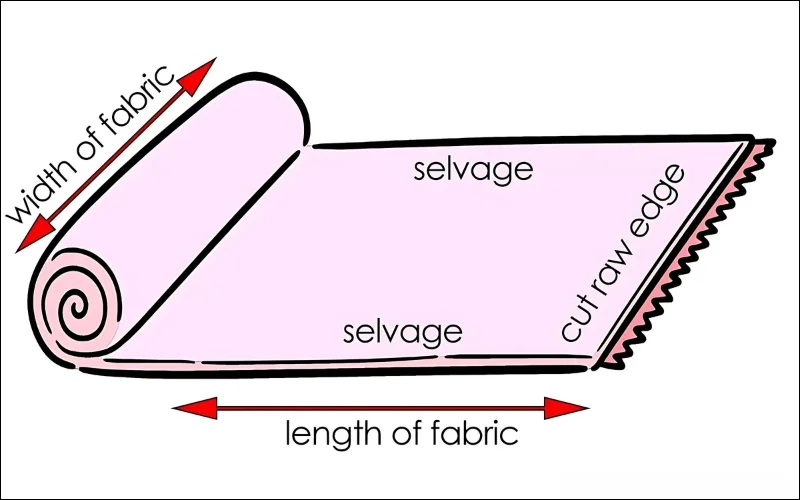
2. Why is knowing fabric width so important?
Knowing the fabric width is very important for several reasons. It helps you plan your projects well and avoid problems.
- Project planning: Fabric width is crucial for figuring out how much fabric you need. It also helps you place your pattern shapes on the fabric smartly. This means you can cut your pieces without wasting too much material, improving your material yield.
- Buying the right amount: If you know the width, you can buy the right amount of fabric. For example, for a dress, you might need 3 yards of a thin fabric that is 45 inches wide. But if you find a similar fabric that is 60 inches wide, you might only need 2 yards. This shows how fabric width impacts making items.
- Cost efficiency: Understanding fabric width helps you save money. You avoid buying too much fabric, which is wasteful. You also avoid buying too little, which means extra shopping trips or shipping costs.
- Making items correctly: For any project, like clothes or crafts, your pattern pieces must fit within the usable width of the fabric. If they don’t, your item won’t turn out right.
When you make items, knowing your fabric details is also helpful if you want to add custom elements. For example, understanding fabric width for ordering woven labels is useful. A woven label needs a good spot. Knowing the space you have on a garment helps choose a good label size.
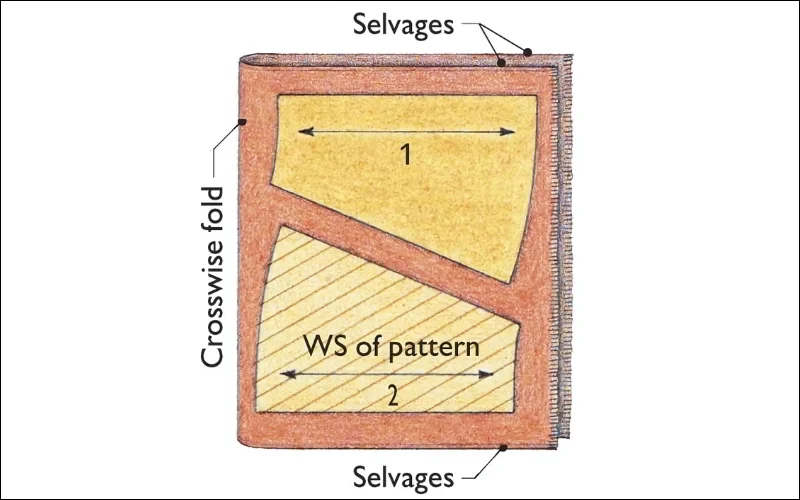
3. Common fabric widths you’ll see
Fabrics come in several standard fabric widths. These widths are usually stated in inches (“) or centimeters (cm). Remember, 1 inch is about 2.54 cm. Here are some common widths and their typical uses:
- 35/36 inches (approx. 90 cm): You might see this for some quilting cottons or traditional fabrics.
- 44/45 inches (approx. 112 cm): This is a very common standard width for quilting cottons, craft fabrics, and some clothing fabrics. It’s great for small craft projects.
- 54 inches (approx. 137 cm): Often used for home decor fabrics, like those for curtains or furniture. Some apparel fabrics also come in this width.
- 58/60 inches (approx. 150 cm): This is a popular width for apparel fabrics, especially knits and dress materials. Some home decor fabrics are also this wide.
- Extra-wide fabric widths (e.g., 90″, 108″ or approx. 228 cm, 274 cm): These are used for large items like quilt backings, big tablecloths, or bed sheets.
Keep in mind that these are general examples, as the actual measurement can vary by the type of material (like cotton, silk, or polyester) and the manufacturer. This is the kind of detail we at Packlove consider when giving advice on things like label placement.
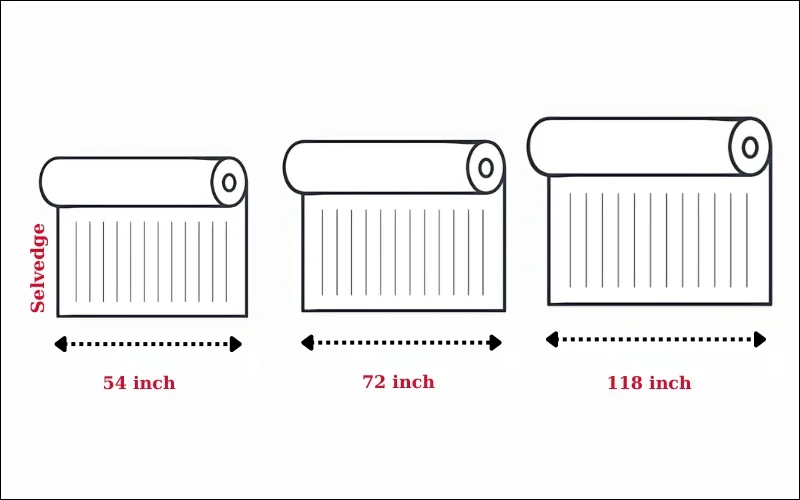
4. How to find out a fabric’s width
It’s easy to find out a fabric’s width. Here are a few common ways:
- Fabric bolt: In a fabric store, look at the end of the fabric roll. There’s usually a label or sticker on the end of the bolt that shows the width measurement.
- Online stores: If you’re shopping for fabric online, the width is typically listed in the product description or specifications section.
- Ask store staff: If you’re in a physical store and can’t find the information, don’t hesitate to ask a staff member for help.
- Measure yourself: If you have fabric at home and you’re not sure of its width, you can measure it. Lay the fabric flat. Use a tape measure to measure from one selvage edge to the other selvage edge.
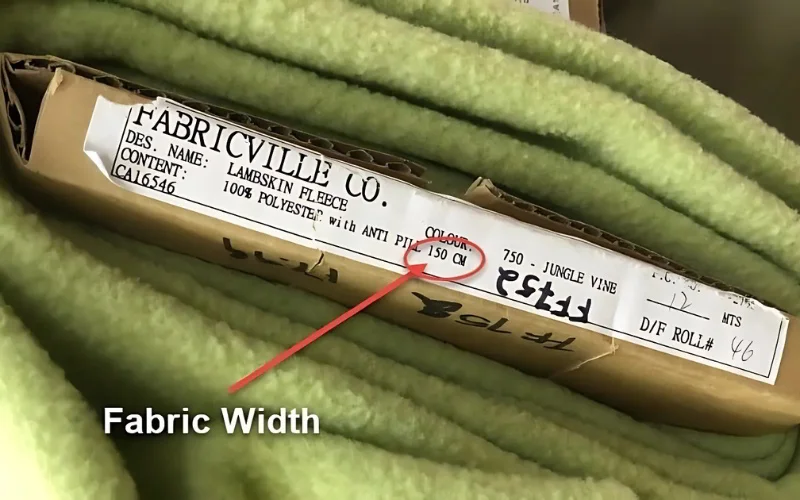
5. How fabric width affects your fabric shopping
As we’ve seen, fabric width can affect how much fabric you need to buy. Wider fabric might mean you can buy less length for your project.
For a very simple example: if your sewing pattern says you need 2 yards of 45-inch wide fabric, you might only need 1.5 yards if you find a similar 60-inch wide material. This is possible if your pattern pieces can fit nicely onto the wider fabric.
However, it’s very important to always check your sewing pattern instructions. Patterns often tell you how much fabric you need for different common widths.
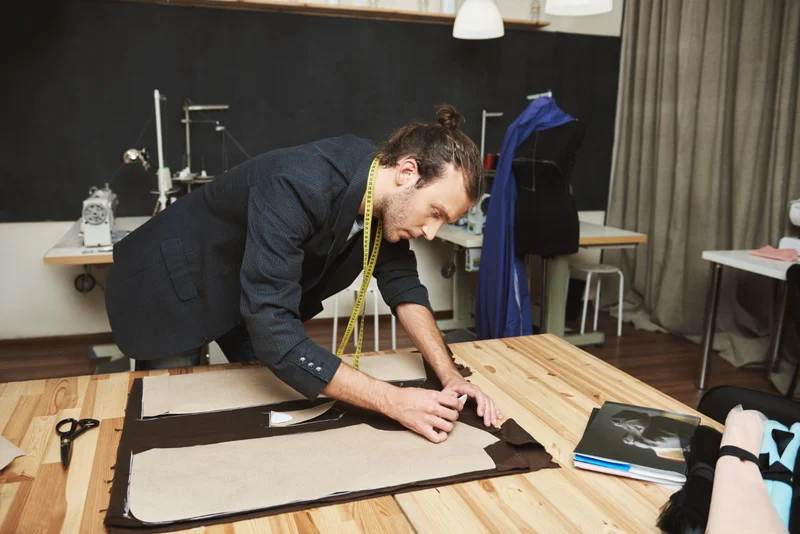
The width of your garment material doesn’t directly decide the size of your custom label. However, being aware of your materials in general is always a good idea.
Interestingly, the concept of “width” is also very important for label materials themselves. For instance, woven label material often comes from ribbons or tapes. These tapes have a specific width.
For instance, woven labels are often made from tapes or ribbons that have a specific width, measured from side to side. This width is a key factor when designing within material width limits for the label itself. Any design for the label must fit within this material width.
As experts in custom labels, we at Packlove guide clients on the best size, type (like woven or printed), and design. While understanding the product’s base fabric is helpful, we primarily focus on the label material’s width to create a fantastic, professional-looking result.
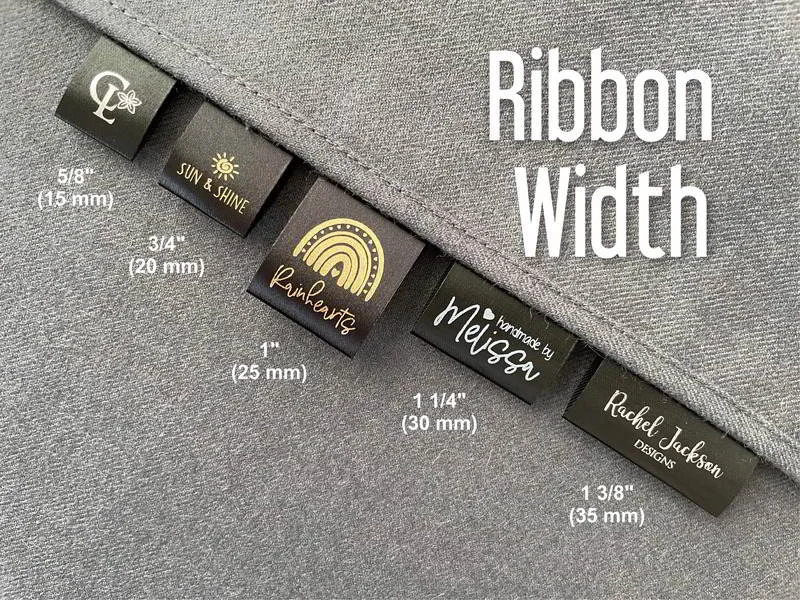
7. Frequently asked questions (FAQs)
7.1 What is “usable fabric width”?
Usable width is the main part of the fabric that you actually use for your project. It’s the area between the selvages. The selvages themselves are usually not included in your cut pieces.
7.2 Does fabric width include the selvage?
Yes, when a store or website states the fabric width, it usually means the total width including the selvages. So, the usable width will be slightly less.
7.3 Are all cotton fabrics the same width?
No, they are not. Different types of cotton fabric can have different widths. For example, quilting cotton is often 44/45 inches wide. Cotton apparel fabric might be wider, and cotton fabric for quilt backings can be extra-wide.
7.4 How do I convert fabric width from inches to cm?
It’s simple! To convert inches to centimeters (cm), multiply the number of inches by 2.54. For example, if a fabric is 45 inches wide: 45 inches x 2.54 = 114.3 cm.
7.5 Why do some patterns list different fabric amounts for different widths?
This is because you can often arrange pattern pieces more efficiently on wider fabric. With wider fabric, you might be able to fit more pieces side-by-side, so you might need less overall length of fabric. Always check your pattern instructions carefully, as they usually guide you on this.
Read more:
Understanding fabric width doesn’t have to be hard! We hope this guide has made it simple. With this knowledge, your fabric shopping and crafting will be much easier. Now that you understand fabric width, let Packlove help you choose the perfect custom labels and packaging for your creations. Explore our solutions or contact us today!






















